8021 Aluminum Foil
8021 aluminum foil, as a high-performance 8-series aluminum alloy foil, is widely used in battery soft packaging, pharmaceutical packaging, and food packaging due to its excellent deep drawing performance, high barrier properties, and good processing performance.
8021 aluminum foil is mainly composed of aluminum, iron, and silicon alloys. The addition of these alloying elements enhances the strength and flexibility of the foil. 8021 aluminum foil has excellent barrier properties, heat resistance, and flexibility, with a smooth and uniform surface and minimal pinholes, making it particularly suitable for various packaging needs.
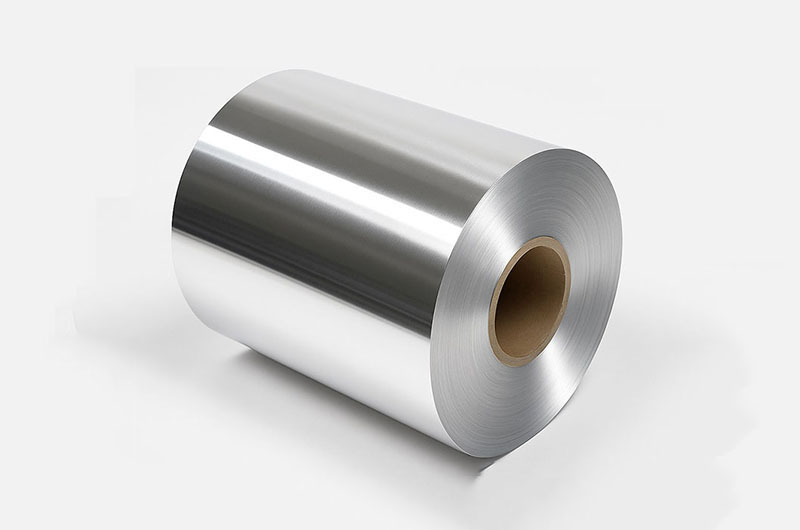
8021 Aluminum Foil Temper
The Temper of 8021 aluminum foil indicates its degree of work hardening and heat treatment condition. Common Temper conditions include:
- H14
- H18
- H22
- H24
- O: Annealed state, fully softened, best ductility
- H12: Work hardened then lightly annealed
- H14: Half hard
- H16: Three-quarter hard
- H18: Full hard
- H19: Extra hard
- H22: Work hardened then partially annealed
- H24: Work hardened then moderately annealed
- H26: Work hardened then heavily annealed
8021 Alloy Aluminum Foil Specifications
- Thickness Range: Typical aluminum foil thickness ranges from a few microns to about 0.2 mm. Ultra-thin aluminum foil (≈6–20 microns) is used for blister/composite films, while thicker foil (up to about 200 microns) is used for heavy-duty packaging or industrial foil. Haomei Aluminum offers conventional thicknesses from 0.018–0.2 mm (18–200 microns), and even thinner foils (6–20 microns) for special applications.
- Width: Foil is typically produced in wide rolls. Standard widths can reach approximately 1200–1600 mm (1.2–1.6 meters). Custom slitting allows for narrower rolls (as narrow as 10 mm) or wider coils based on requirements.
- Specifications: Most 8021 foil is supplied as large rolled coils (reels), which can be slit into smaller rolls or sheets. Core diameters are typically 76 mm or 152 mm. Small consumer rolls or sheets (e.g., kitchen foil rolls) are produced by processing these mother coils into smaller units.
| product | type | temper | Thickness(mm) | Width(mm) |
| 8021 battery case foil | polished, bare | O/HX2 HX4 | 0.036-0.055 | 200-1600 |
| 8021 Packaging Foil | O H22/H24 | 0.016-0.2 | 150-1600 | |
| 8021 Medicinal foil | H14/H18 | 0.018-0.2 | 200-1600 |
8021 Aluminum Foil Surface Finish
- Color
- Anodized
- pvc coated
Color:Red, white, black, blue, green etc
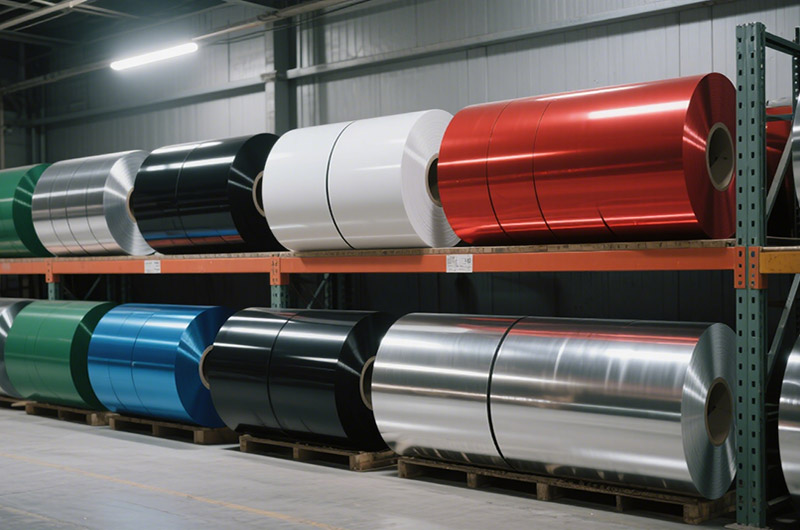
8011 Aluminum Foil Standards
- ASTM B479
- QQA-1876
Characteristics of 8021 Aluminum Foil
Density and Lightweight
8021 aluminum foil has a density of approximately 2.7g/cm³, making it lightweight and easy to handle and use, while helping reduce the overall weight of the product.
Thermal Conductivity
With aluminum’s thermal conductivity of 237W/(m·K), 8021 aluminum foil exhibits excellent thermal conductivity, performing well in applications that require heat dissipation or thermal transfer.
Barrier Properties
8021 aluminum foil has extremely high barrier performance, effectively blocking light, oxygen, moisture, and odors, making it an ideal material for packaging applications.
Glossiness
After special processing, the surface of 8021 aluminum foil is bright and can achieve different gloss effects through various surface treatment processes.
High Strength and Toughness
8021 aluminum foil offers high strength and toughness, especially in the H18 state, where its tensile strength can reach ≥70-85MPa.
Elongation
8021 aluminum foil has good elongation, particularly in the O state, making it suitable for deep drawing processes.
Cupping Value
Cupping value is an important indicator of deep drawing performance. 8021 aluminum foil has a high cupping value, reaching 5.5-7.0mm or more, making it very suitable for deep drawing applications.
Puncture and Tear Resistance
8021 aluminum foil exhibits excellent resistance to puncture and tearing, effectively protecting the contents from physical damage.
Corrosion Resistance
Aluminum easily forms a dense aluminum oxide film in air, providing good corrosion resistance. 8021 aluminum foil shows good corrosion resistance in most environments.
Electrolyte Corrosion Resistance
8021 aluminum foil has good corrosion resistance against battery electrolytes, making it an ideal material for lithium battery pouch cells.
Non-toxic and Odorless
8021 aluminum foil undergoes strict quality control to ensure it is non-toxic and odorless, meeting hygiene standards for food and pharmaceutical packaging. During production, it is tested for bacteria, mold, and other contaminants, with heavy metal content strictly controlled below 0.25 ppm.
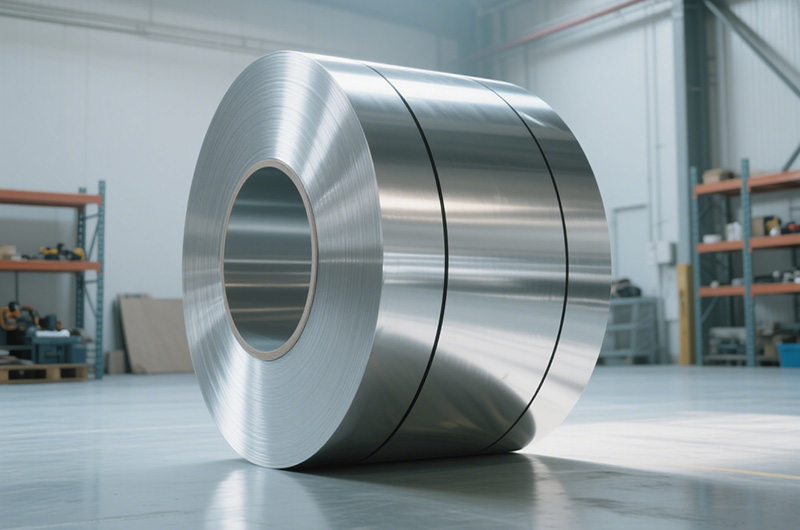
Surface Treatment Methods of 8021 Aluminum Foil
Common Surface Treatment Processes
Coating Treatment
- Anti-stick coating: Coating the aluminum foil surface with non-stick materials such as PTFE (Polytetrafluoroethylene), suitable for food packaging applications.
- Heat seal coating: Coating the surface with heat seal materials such as PE (polyethylene) or modified PE, providing good sealing properties for packaging.
- Anti-corrosion coating: Applying anti-corrosion coatings to enhance the foil’s corrosion resistance in special environments.
Oxidation Treatment
- Anodizing: Anodic oxidation process forms an aluminum oxide layer of 10-20μm on the foil surface, significantly improving its corrosion and wear resistance. Usually performed in sulfuric acid electrolyte at 10-20V for 30-60 minutes.
- Chemical oxidation: Chemical oxidation forms a thin oxide film on the foil surface to enhance corrosion resistance and surface properties.
Surface Cleaning Treatment
- Degreasing: Removes oil stains from the foil surface using organic solvents or alkaline solutions to ensure quality for subsequent processing.
- Water washing: Cleans the foil surface with deionized water to remove impurities and chemical residues.
- Drying: Uses hot air or vacuum drying to ensure a clean, dry surface.
Other Treatments
- Embossing: Uses embossing rollers to create patterns or textures on the foil surface, enhancing aesthetics and functionality.
- Printing: Printing on the foil surface for product information or decorative effects.
Effects of Surface Treatments on Performance
- Barrier performance: Appropriate surface treatments can improve the foil’s barrier properties, enhancing its resistance to light, oxygen, moisture, and odors.
- Heat seal performance: Heat seal coatings significantly enhance the foil’s sealing ability for packaging applications.
- Printability: Surface treatment can improve the foil’s printability, making it easier to accept ink and improving print quality and durability.
- Corrosion resistance: Anodizing or chemical oxidation significantly improves corrosion resistance, allowing use in harsher environments.
- Surface tension: Surface treatment can adjust the foil’s surface tension, generally requiring ≥65mN/m to ensure the quality of subsequent coating or printing processes.
Advantages of 8021 Aluminum Foil
- Safe and Non-Toxic: 8021 aluminum foil meets Grade A water brush standards, with high cup convexity, is safe and non-toxic, suitable for direct contact with food, and poses no health risks.
- Excellent Moisture and Light Barrier Properties: With outstanding barrier performance, it effectively prevents the intrusion of moisture, oxygen, and other contaminants, maintaining the freshness of contents. Its opaque nature makes it especially suitable for packaging light-sensitive products.
- Clean Surface: The surface is smooth and even, free from spots, oil stains, or voids, making it easy to process and use, ensuring packaging quality.
- High Mechanical Performance: It has higher hardness and tensile strength. Although its tear strength is lower, it demonstrates good flexibility in handling and application, making it resistant to cracking or breaking.
- Strong Heat Resistance: It can withstand temperatures up to 300°C without melting or deforming, suitable for high-temperature applications.
- Excellent Compatibility: Compatible with various materials, including plastics, paper, and other metals, it easily integrates with other packaging materials to meet diverse packaging needs.
- Hygiene Testing: Passed tests for bacteria, mold, etc., with heavy metal content not exceeding 0.25 ppm, strictly adhering to industry standards to ensure packaging safety and health.
- Good Processability: 8021 aluminum foil has high flexibility, making it easy to bend, fold, and shape, suitable for packaging products of various shapes and sizes.
8021 household insulation or heat insulation aluminum foil is a typical product of household-grade aluminum alloy used for household food packaging.
8021 aluminum foil alloy is widely used as packaging material after lamination, printing, gluing and other processes.
Specification Selection of 8021 Aluminum Foil in Different Application Scenarios
Battery Soft Packaging Application
In the field of lithium battery soft packaging, 8021 aluminum foil is one of the preferred materials, mainly used in pouch lithium batteries, polymer lithium batteries, and other types of lithium batteries.
Common Specifications:
Thickness: 0.025-0.055mm
Width: 100-1650mm
Temper: O temper (annealed condition), with optimal deep drawing performance
Performance Requirements:
High cupping value: Cupping value should be ≥5.5-7.0mm to ensure good deep drawing performance.
High elongation: Elongation should be ≥18% to ensure it does not crack during deep drawing.
Excellent electrolyte corrosion resistance: Able to resist corrosion by battery electrolytes, ensuring long-term battery stability.
High barrier properties: Prevents ingress of external moisture and egress of internal electrolyte, ensuring safe battery operation.
Clean surface: The surface should be free of oil, pinholes, bumps, scratches, and other defects to ensure good lamination with other materials.
Typical Applications:
Middle layer of pouch battery aluminum-plastic film: Serves as the middle layer of aluminum-plastic film, providing barrier properties and mechanical strength.
Soft battery packaging: Used directly as soft packaging for batteries, replacing traditional steel or aluminum shells.
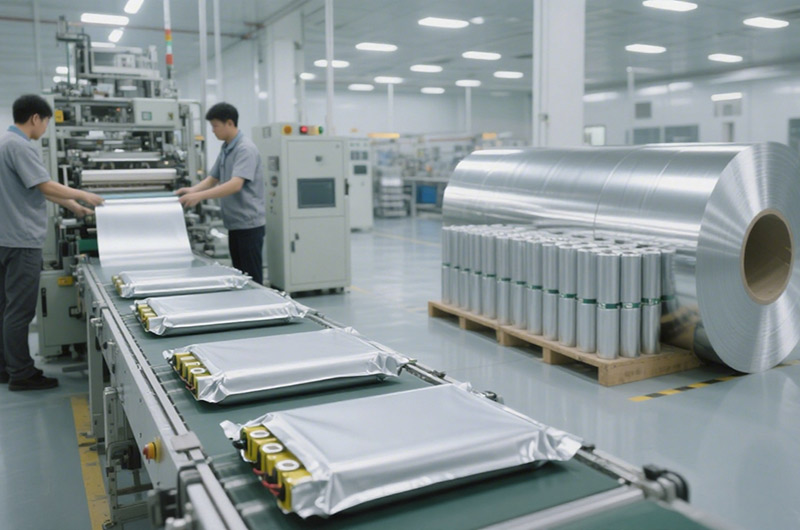
Pharmaceutical Packaging Application
8021 aluminum foil is widely used in pharmaceutical packaging, especially in blister packaging and cold-formed pharmaceutical foil.
Common Specifications:
Thickness: 0.018-0.2mm
Width: 100-1600mm
Temper: O temper or H14 temper, selected according to specific application requirements
Performance Requirements:
High cupping value: Should meet brushing test grade A to ensure good deep drawing performance.
Pinhole-free: Pharmaceutical foil must be free of any pinholes to ensure the sealing and quality of the medication.
Good heat sealing performance: Should achieve good heat sealing with plastic films to ensure packaging integrity.
Clean surface: The surface should be clean, evenly colored, free from spots, oil stains, and flat.
Brushing grade A: Brushing test should reach grade A to ensure hydrophilicity and coating adhesion of the foil surface.
Typical Applications:
Cold-formed pharmaceutical foil: Used for high-end pharmaceutical cold-form packaging, such as blister packs.
Tropical blister foil (aluminum-plastic-aluminum): Used for high-end pharmaceutical packaging, providing enhanced barrier properties.
Base foil for pharmaceutical aluminum foil: Used as the base material in composite pharmaceutical aluminum foil packaging.

Food Packaging Application
8021 aluminum foil is also widely used in food packaging, especially in scenarios requiring high barrier properties and good processability.
Common Specifications:
Thickness: 0.02-0.2mm
Temper: Depending on application needs, O temper, H14 temper, or H18 temper can be selected
Performance Requirements:
Good barrier properties: Effectively blocks light, oxygen, moisture, and odors, extending the shelf life of food.
Non-toxic and odorless: Meets food hygiene standards, with heavy metal content not exceeding 0.25 ppm.
Good heat seal performance: Facilitates secure sealing in food packaging.
Puncture and tear resistance: Withstands puncture and tearing during the food packaging process, protecting the contents.
Clean surface: Should be free of oil and impurities, ensuring food safety.
Typical Applications:
Food packaging foil: Used to package various foods such as meat, dairy, chocolate, etc.
Foil container material: Used for making aluminum foil food containers, with good formability and heat resistance.
Liquid food packaging: Used for aseptic packaging of milk, juice, and other liquid foods.
High-temperature retort packaging: Withstands high-temperature retort processes while maintaining packaging integrity.
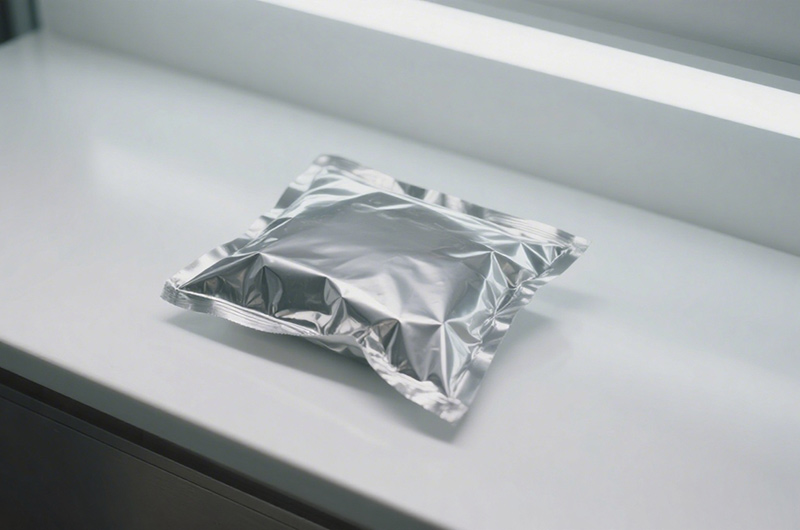
Other Application Fields
Besides battery soft packaging, pharmaceutical packaging, and food packaging, 8021 aluminum foil is also widely used in many other fields:
Daily Consumer Packaging:
Cosmetic packaging: Utilizes its high barrier and aesthetic properties to protect cosmetics from external factors.
Tobacco packaging: Used in cigarette packaging, providing good moisture-proof and aroma-retaining properties.
Gift packaging: Leverages its metallic luster and processability for upscale gift packaging materials.
Industrial Applications:
Electronic equipment shielding materials: Uses aluminum's conductivity to create electromagnetic shielding materials for electronic devices.
Heat sink materials: Uses aluminum’s excellent thermal conductivity to make heat dissipation materials for electronics.
Composite materials: Serves as a component of composite materials, offering strength and barrier functionality.
Architecture and Decoration:
Architectural decoration materials: Used in architectural finishes such as ceilings and wall panels.
Thermal insulation materials: Part of thermal insulation systems, offering insulation and moisture resistance.
8021 Aluminum Foil Quality Control
As a supplier of 8021 aluminum foil, Haomei Aluminum strictly adheres to the following quality control system to ensure every roll delivered meets the highest standards.
Raw Material Control: Strict Standards
We select high-purity aluminum ingots (purity ≥99.7%) to ensure a clean base material.
We adopt standard AlSi12 master alloy, strictly controlling Fe content to 1.2-1.7% and Si content ≤0.15%.
Advanced three-stage filtration is applied during melting to efficiently remove inclusions from the melt.
Laying a solid foundation for excellent processing properties and purity from the source.
Process Precision Control: Advanced Technology and Stable Production
Hot rolling finish temperature is strictly controlled at 310±5℃ to ensure uniform and stable microstructure.
Cold rolling is equipped with AGC/AFC systems for precise control of thickness and flatness throughout the process.
Annealing temperature deviation is within ±3℃ to ensure performance consistency and excellent deep drawing capability.
Slitting (Class 100, 000), packaging (Class 300, 000) are all completed in clean environments, with final product surface tension ≥65mN/m.
Finished Product Assurance: Comprehensive Factory Inspection
Each roll is scanned in full width using a high-precision thickness gauge to ensure uniform thickness.
Pinhole inspection is conducted under ≥3000 lux lighting to effectively control defects.
Mechanical properties are tested strictly according to GB/T 16865: tensile strength 70-85MPa, elongation ≥18%.
Cupping value (IE value) consistently reaches 5.5-7.0mm, proving excellent deep drawing formability.
Traceability and Quality Assurance: Your Trusted Choice
Each roll is uniquely identified with a complete batch number traceability system.
A standard 6-month quality guarantee is provided from the date of delivery (unless otherwise agreed).
For confirmed quality issues attributable to our company, we provide full quality assurance and proactive resolution.
A clear and efficient dispute resolution process is in place to ensure timely response and proper resolution of feedback.
We continuously invest in advanced equipment, enforce strict process control, and improve inspection systems and traceability management to ensure that the delivered 8021 aluminum foil has stable performance and reliable quality to meet your demanding application requirements.
8021 Aluminum Foil Chemical composition
| Si | Cu | Mg | Zn | Mn | Cr | Fe | Ti | Other | Other total | Al |
| ≤ 0.5-0.9 | ≤ 0.1 | ≤ 0.05 | ≤ 0.1 | ≤ 0.2 | ≤ 0.05 | ≤ 0.6-1.0 | ≤ 0.08 | ≤ 0.05 | ≤ 0.15 | remainder |
Mechanical Properties of Aluminium Foil Alloy 8021
|
Tensile strength σb (MPa) |
Elongation δ10 (%) |
Cupping test value (mm) | Note |
| 90-110 | 13-18 | 6.2-7.3 | Erichsen Test |
8021 aluminum foil physical properties
Density: 2.71 g/cm³. Melting point: about 660°C. Linear expansion coefficient: 23.1 μm/m °C (20-100 °C). Thermal conductivity: 125-150 W/m·K.
Comparison of 8021 Aluminum Foil with Other 8-Series Aluminum Foils
The 8-series aluminum foils mainly include alloys such as 8011, 8021, and 8079. Each of these alloys has unique performance characteristics suitable for different application scenarios.
Main 8-Series Aluminum Foil Alloys:
8011 Aluminum Foil: One of the most commonly used 8-series aluminum foils, featuring good overall performance.
8021 Aluminum Foil: Offers excellent deep drawing performance and corrosion resistance, especially suitable for battery pouch packaging and pharmaceutical packaging.
8079 Aluminum Foil: Features higher strength and elongation, suitable for applications requiring high deep drawing performance.
Common Characteristics of 8-Series Aluminum Foils:
Good processability: Offers good ductility and deep drawing performance, suitable for various processing techniques.
Moderate strength: Higher strength than pure aluminum foil, but lower than most heat-treatable aluminum alloys.
Good corrosion resistance: Provides good corrosion resistance, especially in neutral and weakly acidic environments.
Excellent surface properties: Smooth surface, easy to undergo various surface treatments.
Comparison Between 8021 and 8011 Aluminum Foils
| Property | 8021 Aluminum Foil | 8011 Aluminum Foil |
| Iron (Fe) Content | 1.2-1.7% | 0.6-1.0% |
| Silicon (Si) Content | ≤0.15% | 0.5-0.9% |
| Strength | Moderate | Slightly higher |
| Elongation | Higher | Moderate |
| Puncture Resistance | Excellent | Good |
| Applications | Battery pouch packaging, high-end pharmaceutical aluminum foil | General food packaging, pharmaceutical packaging, cable foil, etc. |
Comparison Between 8021 and 8079 Aluminum Foils
| Property | 8021 Aluminum Foil | 8079 Aluminum Foil |
| Iron (Fe) Content | 1.2-1.7% | 0.7-1.3% |
| Silicon (Si) Content | ≤0.15% | 0.05-0.30% |
| Strength | Slightly higher | Moderate |
| Elongation | Moderate | Slightly higher |
| Cupping Value | 5.5-7.0mm | 6.2-7.5mm |
| Applications | Battery pouch packaging, cold-formed pharmaceutical foil | High-end pharmaceutical packaging, liquid food packaging |
Comparison of 8-Series Aluminum Foil with Other Aluminum Foil Series
Compared with other aluminum foil series (such as 1-series pure aluminum foil and 3-series aluminum-manganese alloy foil), 8-series aluminum foil also shows distinct characteristics:
Comparison with 1-Series Pure Aluminum Foil:
Chemical Composition: 1-series aluminum foil is pure aluminum or contains very few other elements, while 8-series aluminum foil contains higher amounts of iron and silicon.
Strength: The strength of 8-series aluminum foil is significantly higher than that of 1-series pure aluminum foil.
Elongation: 1-series pure aluminum foil has higher elongation, especially in annealed condition.
Electrical Conductivity: 1-series pure aluminum foil has better conductivity than 8-series foil, approximately 62% IACS.
Applications: 1-series pure aluminum foil is mainly used in applications requiring high conductivity or cost sensitivity, such as wires, cables, and electronic components; 8-series foil is primarily used in packaging and applications requiring certain strength.
Comparison with 3-Series Aluminum-Manganese Alloy Foil:
Chemical Composition: 3-series aluminum foil mainly contains manganese, while 8-series aluminum foil primarily contains iron and silicon.
Strength: 3-series aluminum foil has slightly higher strength than 8-series foil.
Corrosion Resistance: 3-series aluminum foil has better corrosion resistance than 8-series, especially in marine and industrial environments.
Processability: 8-series aluminum foil has better deep drawing performance than 3-series foil.
Applications: 3-series aluminum foil is mainly used in construction decoration, shipbuilding, etc.; 8-series foil is mainly used in packaging and electronics.
Factors for Choosing 8021 Aluminum Foil
Application Scenario Factors
Food Packaging: Choose O-temper or H14-temper that meets food hygiene standards.
Pharmaceutical Packaging: Choose O-temper foil with high cupping value and no pinholes.
Battery Pouch Packaging: Choose O-temper foil with high cupping value and excellent resistance to electrolyte corrosion.
Deep Drawing Processing: Choose O-temper foil with high cupping value.
High-Temperature Environments: Choose foil that can withstand high temperatures.
Material Performance Factors
Strength Requirements: Select the appropriate temper based on application.
Elongation Requirements: For deep drawing or bending processes, select O-temper foil with high elongation.
Cupping Value Requirement: For deep drawing applications, choose foil with cupping value ≥ 5.5–7.0mm.
Barrier Properties: Choose medium-thickness, pinhole-free foil for high barrier requirements.
Corrosion Resistance: Select foil with suitable corrosion resistance based on environmental conditions.
Processing and Quality Factors
Process Compatibility: Choose aluminum foil that matches existing equipment and processing techniques.
Dimensional Accuracy: Select foil that meets precision requirements of the application.
Surface Quality: Choose foil free of pinholes, scratches, and oil stains.
Performance Stability: Select foil with stable production process and consistent performance.
Cost and Sustainability Factors
Material Cost: Choose the most cost-effective product.
Processing Cost: Consider how well the material adapts to the production process.
Transportation Cost: Choose appropriate packaging and transportation methods.
Recyclability: Aluminum is a highly recyclable material.
Long-Term Use Cost: Choose high-quality, stable-performance aluminum foil.
Why Choose 8021 Aluminum Foil for Packaging?
- High Barrier Performance: 8021 aluminum foil can form a dense and uniform barrier layer that effectively blocks moisture, oxygen, light, and odors. (This is precisely why it is the preferred choice for food and pharmaceutical packaging—to prevent product deterioration and maintain product integrity.)
- Corrosion Resistance: The aluminum oxide surface of this alloy is stable and corrosion-resistant in most environments. This helps protect sensitive contents and extends shelf life. It is non-toxic and odorless, meeting stringent food- and pharmaceutical-grade safety standards.
- Excellent Formability: Compared to pure aluminum foil (1xxx series), 8021 aluminum foil has higher tensile strength while maintaining good elongation. It can undergo deep drawing and large bending without cracking. For example, the elongation of the softer 8021-O/H22 foil is about 13–18% (while full-hard aluminum foil has an elongation of only a few percent). This flexibility is essential for forming packaging bags, blister packs, and containers with complex shapes.
- Smooth, Pinhole-Free Surface: The microstructure of 8021 aluminum foil is very fine and uniform, with almost no oil stains, spots, or pinholes. This clean surface is ideal for lamination, printing, and heat sealing processes. (In fact, the number of pinholes in 8021 foil is typically 70% less than that of similar foils, greatly reducing the risk of leakage.)
- Good Conductivity: The high aluminum content gives 8021 aluminum foil excellent electrical and thermal conductivity. (While barrier and formability are the primary considerations, this also makes it highly useful in electronic or thermal transfer applications.)
- Compatibility: 8021 aluminum foil has good adhesion with coatings, adhesives, and plastics used in multilayer packaging. Its surface is easily laminated with paper or polymer films. It can also withstand common packaging processes such as slitting, embossing, and printing.
8021 aluminum foil combines high strength and ductility with outstanding barrier and corrosion resistance, making it a "premium" packaging foil. It is widely used in areas where reliability and safety are critical (such as pharmaceuticals, food, and batteries).
Limitations of 8021 Aluminum Foil
Weak Corrosion Resistance in Acidic or Alkaline Environments
8021 aluminum foil has certain limitations in corrosion resistance. Especially in acidic or alkaline environments, its corrosion resistance is poor. Prolonged exposure to these environments may cause the foil to corrode, which can significantly affect its barrier performance. Corrosion not only reduces the foil’s protective properties but may also damage the quality of the contents and shorten the lifespan of the packaging material. Therefore, this should be considered when designing packaging solutions, and 8021 aluminum foil should be avoided in strong acid or strong alkaline environments.
Lower Strength
Compared to other aluminum alloys such as 8011 or 8079, 8021 aluminum foil has lower strength. This lack of strength may limit its use in applications that require high tensile strength or puncture resistance. For example, in applications needing high mechanical strength, industrial use, or demanding environments, 8021 aluminum foil may not meet the requirements. Choosing a higher-strength aluminum alloy may be a better option to ensure the material’s durability and reliability in actual use.
8021 Aluminum Foil FAQs
| Question | Answer |
| What is the density of 8021 aluminum foil? | The density of 8021 aluminum foil is 2.71 g/cm³. |
| What is the melting point of 8021 aluminum foil? | The melting point of 8021 aluminum foil is about 660°C. |
| What is the linear expansion coefficient of 8021 aluminum foil? | The linear expansion coefficient is 23.1 μm/m·°C (20-100 °C). |
| What is the thermal conductivity of 8021 aluminum foil? | The thermal conductivity ranges from 125 to 150 W/m·K. |
| What are the common applications of 8021 aluminum foil? | Common applications include battery foil and pharmaceutical foil. |
| What is the typical temper of 8021 aluminum foil? | The typical temper is O (annealed), providing maximum ductility. |
| How is 8021 aluminum foil typically produced? | It is produced by rolling large slabs of aluminum through rolling mills until they reach the desired thickness. |
| What are the advantages of using 8021 aluminum foil? | Advantages include good corrosion resistance, formability, and moderate strength. |
| Is 8021 aluminum foil recyclable? | Yes, aluminum foil, including 8021, is fully recyclable. |
Additional Information About Aluminum Foil
What is the strongest aluminum foil?
The strongest aluminum foil is typically the extra-thick or heavy-duty aluminum foil, often around 0.02 inches (0.5 mm) thick, used in specialized applications.
How is 8021 aluminum alloy foil processed?
- Cold Rolling: Produces thin foils with consistent thickness and surface quality.
- Annealing: Enhances ductility and formability, making it easier to handle and shape.
What standards does 8021 aluminum alloy foil comply with?
8021 aluminum alloy foil typically complies with standards such as ASTM B373, which are standard specifications for aluminum foil used in flexible barriers, food contact, and other applications.
Users viewing this material also viewed the following
